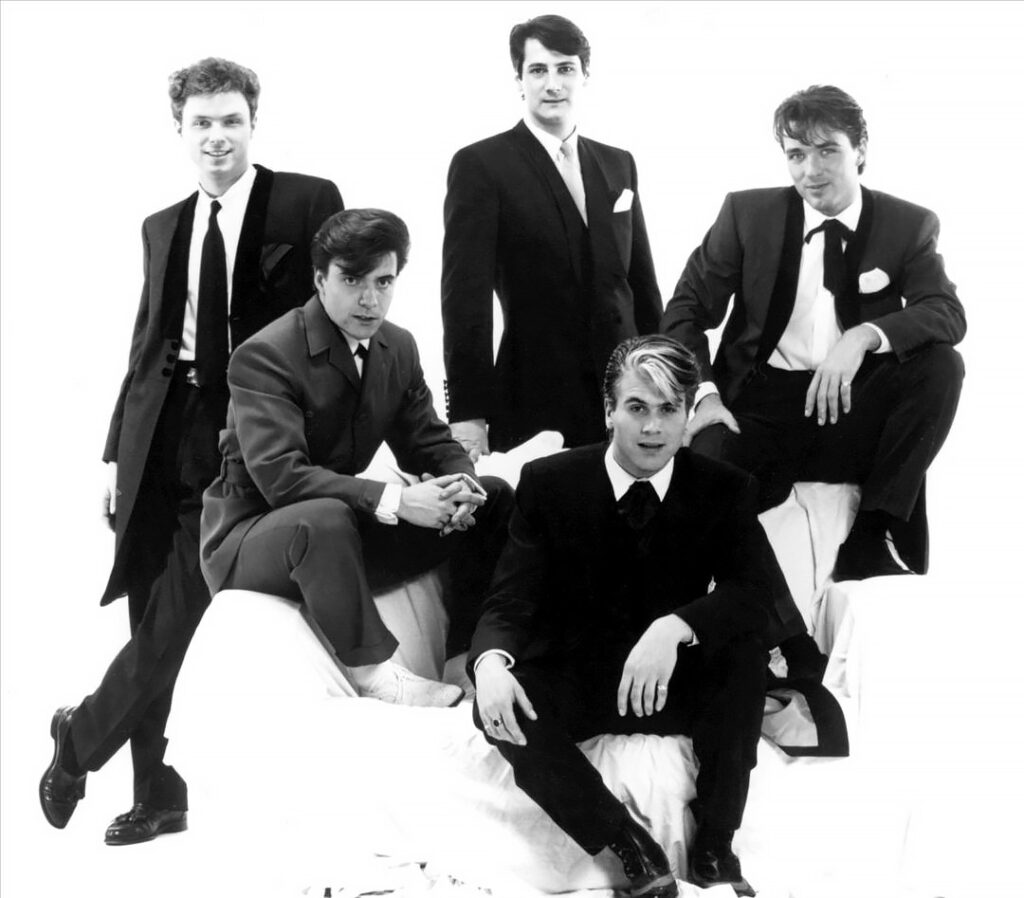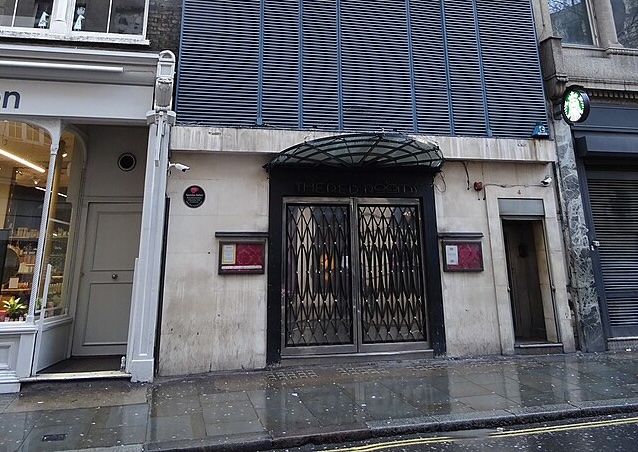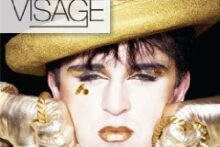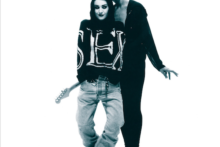History is made at night. There are things that need to gestate before they’re exposed to daylight or have a spotlight shone on them – and sometimes the mystery heightens the mystique. That was always going to be the case with the Blitz, based in a slightly shoddy-looking joint at 4 Great Queen Street, (almost) in Covent Garden, filled with nasty green furnishings which look like they might have benefited from being caught up in its namesake. But that didn’t really matter. It wasn’t there forever – from February 1979 to October 1980, to be precise – yet that Tuesday night knees-up was around long enough to make an impact way beyond those eighteen months.
There are a lot of Blitz-related bits happening this Autumn, what with the Design Museum exhibition Blitz: the Club That Shaped the 80s, where you can visualise the outfits and indulge yourself with the photos and magazines of the era; there’s resident DJ Rusty Egan’s autobiography of tallish tales about the clubbing frontline and possibly his role in inventing Kraftwerk (or something); and Everything Is Now, a deep-diving box set by Spandau Ballet covering their 1978–1982 era. And now there’s this: Robert Elms’ first-person account of the club and its place in history. In fairness, after Leigh Bowery at the Tate and The Face magazine at the National Portrait Gallery, it was only fair and correct that the place which was in many ways the origin story of the spirit and ethos of London clubland finally had its own moment.
As seen on numerous BBC4 documentaries, London – and indeed the rest of the country – was a bit of a shithole in the late 1970s. Long before it became the current centre of the universe and vibrant envy of the planet and the sort of place where racists day-trip to march with a cokehead ex-pat ‘patriot’, there was still an unease where a condensation of vileness and violence was genuinely everywhere. On the bright side, punk and its attendant DIY outlook had created a blank page where young creatives from up and down the country were drawn to the city to study and experiment with themselves. And buildings that now have an asking price of double-figure millions were one-time squats full of future pop stars, artists and designers. Robert Elms was more of a commuter traipsing into the centre of London from Burnt Oak to study politics at the London School of Economics. He was in the right place at the right time and wearing the right trousers when he found out about a ‘Bowie Night’ at Billy’s club on Dean Street in Soho, having been invited there by doorman/runner/occasional shop assistant at PX, Steve Strange.
Once Billy’s ended and the operation moved to the ropey wartime-themed bar in Great Queen Street, the Blitz already had a readymade, strategically-dressed, multi-everything clientele happily finding a whole £1 to get in and stand around supping Red Stripe and chain-smoke to ‘Being Boiled’, ‘Moscow Diskow’, ‘Trans Europe Express’ plus regular interjections of David Bowie. From then on it would only get bigger and better.
For all the accusations of elitism, the Blitz was populated by dole-class dreamers and students who’d hopped on to something that felt like a respite from the genuinely grotty times. Dressing up was part of the adventure of escape. Clubland’s history has always been about kids wanting to elevate themselves. In an echo of what ballroom culture would eventually incorporate into its make-up, the clubbers were ‘serving’ looks that were far away from their daily realities and humdrum existences. The escapism was akin to a drag culture of realness.
Well, okay, not many people perhaps actually aspired to be a nun, a fur-festooned exiled countess, a leather clone or a mountaineer, but the Blitz was a way of shedding the trappings of the everyday. Everything was borrowed, recycled or reused, from the music to the clothes to the dancing. If anything, the futurists, the ex-punks, soulpeople and musically tribeless dandies had to rely on what had occurred beforehand moreso than any other nightlife clubland cult. That’s long been a part of British culture and what makes it its strength – assimilation, creation and renovation into whole new worlds and new scenes, new sounds and new styles.
Elms is chatty and his occasional grand claims are often backed up with actual facts. This book, at times, can read like a run-through of names of virtually every creative, popstar and artist of the next decade and beyond. And yes, while it is fabulous to be connected to all the right people, everyone mentioned in these pages genuinely went on to something. In revisiting that era, Elms himself wanted to tap back into “that stroppy, optimistic, overdressed young man again”. He is in his element reliving his memories and connecting the dots and tracing the paths. There’s an enthusiastic insider vibe to it all, and to be honest, you actually do learn a little bit more than the tropes offered in previous chronicles and documentaries from soggy futurists going on about the time Mick Jagger was not allowed in or Boy George pickpocketing from the cloakroom during his brief tenure as the coat assistant. You also get a little bit more detail as to where everyone got their clothes or ideas or their drugs – and the lengths they would go to get them. To the extent of heading to Paris to watch A Clockwork Orange for style tips because it was still banned in the UK or travelling to a still-very-austere Berlin under the pretence of playing football.

For something often sniffly claimed as a London thing, Elms recounts discovering likeminded souls around the country, with kindred cells in Cardiff, Bournemouth and even some frill-festooned poseurs named Duran Duran up in Birmingham’s Rum Runner club. Speaking of future pin-ups, while the club saw various Bananaramas, Visages and Marilyns pass through, Spandau Ballet were really the only group to truly emerge from the Blitz itself, having gone through a series of evolutionary steps to get to their big break. The almost casual “I named Spandau Ballet Spandau Ballet” from the man behind one of the most iconic (read: pretentious) gig introductions of all time feels somewhat throwaway, but it was icing on the cake for a band that only became more focused once they found their tribe. The other key pop moment for the club would probably be when David Bowie turned up and singled out some of the clientele for his ‘Ashes To Ashes’ video. Everyone was hilariously trying to play it ice cold while the bloke who unsuspectingly put his name to Bowie Nights wandered around the joint.
Elms is part Samuel Pepys, chronicling a London, a country and, indeed, a nightlife almost unrecognisable half a century on. He’s also like an enthusiastic labrador that wants to excitedly and infectiously career you through this extraordinary period. His distance is such that he can reflect on being pretentious and all the folly that comes with an ‘us-against-the-world’ youthfulness that arrogantly trashed its ancestry – as all youthful arrogances should – and is now able to place it into a lineage of not just London clubland, but a wider culture and moment. And while it’s easy to snort at the idea that certain aspects of culture such as the YBAs and Ibiza would not have happened without the Blitz, Elms convincingly argues that it certainly laid the groundwork for a large percentage of it.
Blitz: The Club That Created the Eighties by Robert Elms is published by Faber








